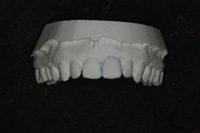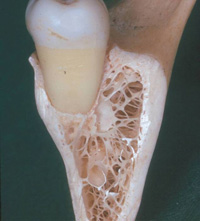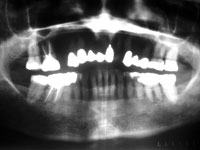Regardless of how a patient enters a practice, he or she brings feelings about having an experience in a dental office. The feelings may be perceived as positive (joy or relief) or negative (dread or fear of…). We as dentists must respond supportively to enable a positive outcome in the patient’s mind. Only through trust does the patient with a disabling feeling gain the confidence to accept the care that meets a need or want.
It has been said that all fear is dissolvable in trust. Perhaps the ultimate example of this is skydiving. Who would jump out of a plane without trusting the parachute packer? What patient would have dentistry performed without a level of trust existing? How does a dentist facilitate a patient trusting him or her when the patient has feelings that preclude such trust?
These questions lead to the issue of how to respond to the feelings patients bring with them to a dental office. See the list in the Table. Are you prepared to deal with each of these feelings? Fear of something is only one of a number of feelings that affect the dentist/patient relationship. Patients can also have one of 2 types of anxiety—state or trait, and what the dentist does not understand about patients influences the success or failure of the trust building needed for successful case acceptance and treatment to take place. These issues will be explored to facilitate patient treatment that is highly supportive of psychological needs.
| Table. Feelings Patients Can Bring to the Dental Office. | |||
|
ANXIETY VERSUS FEAR
It is important to distinguish between anxiety and fear. Anxiety is an undefined fear, while fear is specific. For example, if the patient is afraid of the drill, it is specific. However, a patient expressing anxiety, in order to be helped, needs to express what specifically he or she is afraid of. As this article progresses, it will be important to understand that a patient expressing anxiety ultimately has one of the feelings listed in the Table, and once that is known, specific support can be rendered.
Second, each patient experiencing anxiety has one of 2 types. Trait anxiety describes the patient who is nervous about most everything all the time. Each of us has met this person. He or she is just overly concerned about whatever comes along in all phases of life.
State anxiety describes the nervousness about a specific situation at the time he or she is encountering it. This is important to know because the 2 different anxieties can be treated the same way with different outcomes. Recognized for what they are, you can eliminate the patient’s state anxiety with good, supportive communication, but you may not affect the patient with trait anxiety. That patient may end up just being nervous or fearful, but hopefully less so with the support needed to get through the treatment requested.
THE ORIGIN OF DENTAL FEAR
All fear develops in one of 2 ways: hearing other people’s stories or experiencing an event poorly. Although patients do acquire fear from hearing of a friend’s poor experience, most dental fear is related to direct experience. According to many research articles (a PubMed search brings up 1,158 articles on this subject), the majority of dental fear develops from one or more past dental experiences such as painful treatment, poor dentist behavior, or treatment error.1-4 If this is the case, it is no wonder patients are seeking a dentist with the ability to become trusted through good listening skills, which leads to the patient feeling understood. The rest of this article is devoted to just that—providing the how-to in creating a safe environment for all patients, thus supporting the needs of the patient who brings in one or more of the feelings listed in the Table.
WHO ARE YOU WHEN TREATING A PATIENT?
Stress brings out poorer characteristics in each of us, and treating difficult patients is a perfect example. Kent5 found dentists’ most frequently mentioned problem involved the patient/dentist relationship, mostly involving interventions with the patient’s anxieties and feelings. Ingersoll6 found “showing fear” to be the most bothersome problem presented by patients.
When you meet up with the feeling patient, what background do you have to draw upon? The context theory is important to us as dentists, and it is the following: Every man’s actions are to a very decisive extent influenced by his early experiences, and no man’s behavior can be analyzed or affected without knowledge of those experiences.
In other words, if you treat difficult patients, then your past greatly influences how you interact. Bienvenu7 states that the most important single factor affecting people’s communication with others is their self-concept—how they see themselves and their situations. People’s beliefs about themselves are always determining factors in their communication behavior.
In the Table, you can find feelings that come to a dentist when treating any patient, but particular feelings come to a dentist who finds it difficult to treat certain patients. If you are having one of those feelings, how are you dealing with it?
Before I can communicate effectively with any patient, I have to be aware of how I am feeling. Having come from the context of a nonfeeling family, I had to learn. For you to be an effective communicator, you may have to look inward to see what your context brings to the table. Once you are aware of that, and it may take some work on your part, you may move on to becoming a more effective communicator, supporting patients with feelings. Let’s see how that can happen.
WHAT DO PATIENTS NEED?
I found that once I learned more about what caused patients to come in with the feelings they had, I was able to be more understanding. Many researchers have surveyed patients as to their fears. Gale,8 Biro,9 Scott,10 and Kleinknecht11 found that basically dentists play a big role in creating these fears. Perhaps it will be instructive to list some of what has been learned from patients. That way, you will at least be aware of how some of your patients will perceive you before you actually enroll them into your office.
Rankin and Harris12 found these statements to project a perception of dentists:
(1) I feel that dentists do not like it when I make a request.
(2) Dentists are efficient, but it often seems they’re in a hurry.
(3) I feel like dentists do not provide clear explanations.
(4) I feel that dentists do not really listen to what I say.
(5) I feel that the dentist will do what he wants to do no matter what I say.
(6) Dental professionals say things to make me feel guilty about the way I care for my teeth.
(7) I am not sure I can believe what the dentist says about the work that is needed.
(8) I think that dentists say things in a way to try and fool me.
(9) I feel that dentists do not take my worries (fears) seriously.
(10) I feel that dentists put me down (make light of my fears).
(11) I worry if dentists are technically competent to do a good quality job.
(12) If I were to indicate that it hurts, I don’t think the dentist would stop and try to correct the problem.
(13) When I am in the chair, I feel like I can’t stop the treatment for a rest, if I feel the need.
(14) I feel uncomfortable asking questions.
Is it any wonder that patients may perceive our profession the way they do? Specifically, Nos. 4 and 5 get to the heart of the matter. With a basic understanding of what a patient may bring with him or her as it relates to the aforementioned list, does it seem easier to see how to focus your attention upon eliminating each of these concerns? Facilitating a patient feeling understood around each of these issues (and any others) is the basis for all communication leading to trust and case acceptance.
THE BASIC COMMUNICATION SKILLS
Much has been written over the years about communicating with patients. When it is all distilled, the most basic outcome needed is a patient perceiving he or she is understood. From that feeling of being understood can come trust. So how does one facilitate a patient feeling understood?
First, can we agree that patients may bring with them a feeling of vulnerability along with their other feelings? Experiencing empathy from those they encounter in the office can relieve patients’ fears and apprehensions. This starts with the first phone call and never stops.
Empathy is the ability to experience and understand the world of another person through active listening. It is to value what the speaker is saying. Covey13 states essentially that the patient needs to feel understood before we, as dentists, need to feel understood. I cannot expect the patients to listen to me explain all my issues and concerns about treating them before they have the perception that I understand their issues, concerns, and feelings, and that my behavior will be appropriate.
Second, the skill of listening (hearing is just physical) is, perhaps, the most important event you can demonstrate that will lead to understanding. When the patient feels understood, trust can follow.
COMMUNICATION BLOCKS FOR LISTENING
The following are questions that will lead you to understand what barriers (the context theory) you may have to listening in order to understand what a patient may be trying to say.
(1) Are you angry because of the patient’s personality?
(2)Does the patient remind you of someone from your past with whom you did not get along?
(3) Are you upset because of something the patient says?
(4)Do you think you know what the patient will say before it is said?
(5)What in your background or personality gets in the way of what is being communicated?
(6)Are there certain words, phrases, or actions that consistently trigger certain positive or negative responses in you?
(7) Do you find it hard to concentrate on what the patient is saying because of office distractions or your own internal issues or daydreaming?
(8) Do you find yourself listening selectively, hearing only those words and ideas you want to hear?
From these questions, it follows that you are now either a poor, average, or good listener. Consider taking a listening survey from Learn to Listen: How To Tune In Before Someone Tunes You Out by Jim Dugger:
Rate yourself from 1 (low) to 10 (high) on each of the following:
•I am motivated to listen to the patient.
•I care about the patient and show it.
•I use all of my physical being to show that I am a good listener.
•I use all of my senses to determine the patient’s mean-ing.
•I strive for accuracy.
•I do not judge.
•I control the listening situation.
•I increase my power of retention through observation.
•I practice good listening and teach good listening.
•I listen to myself.
A score below 30 indicates you are a poor listener, 31 to 51 a lower-average listener, 51 to 70 a higher-end average listener. Scoring above 71 indicates you’re a good listener.
LISTENING SKILLS
What listening skills you have learned are probably by trial and error. You have always been doing the hearing—a physical act. The listening part is an emotional and intellectual act requiring responding to both the verbal and nonverbal message. Listen to the content (facts, ideas) and the intent (emotional meaning); assess the nonverbal communication (eye contact, tone of voice, and facial expressions). Also, remember that communication is approximately 10% verbal, 35% tone of voice, and 55% body language.
The classic way to respond to the patient while listening is to paraphrase periodically what you understand has been communicated. As this occurs the patient becomes more confident of your support around the issues most important to him or her. This style is called “reflective listening,” as it takes in the whole message while you are clarifying what is being said to convey mutual understanding. Questions are used to help clarify for understanding.
It is important to use the following as examples of what you might say, but only in the context of what the patient has said: Tell me how you would like me to be the same or different than your last dentist? What about the past treatment did you not like? How do you feel about that? When you get fearful, what’s it like? You said you felt put down—could you say more about that?
In a first appointment, it is better to keep the patient talking about what is important to him or her than to cut it short. Too often a new patient has told me that his or her last dentist did not really interact with him or her. This is born out by the research.
A GOOD OUTCOME WITH YOUR COMMUNICATION SKILLS
Can we agree that the patient walks in with “hope”—a hope that you will be at least as good as the last dentist he or she liked or you will be better than the last dentist he or she disliked? Communication skills will enable both you and the patient to reach a favorable understanding around the issues. If your communication is supportive and responsive to the patient’s need(s), then the outcome the patient is looking for will take place. Basically, the patient comes to us for dentistry that will do something for them. Whether they are certain just what that is can become apparent if you are not overly directive or authoritarian. If the patient feels resistant to your approach, then the patient may not reveal enough information to help you find solutions that address more than the clinical needs. The psychological needs a patient’s feelings indicate could impede the treatment plan you think is appropriate.
SOME FINAL BASICS
Try always to respond rather than react. When one responds he stays in control. When one reacts, the other person is in control. Be a dental authority, not an authoritarian. No other person knows how someone else feels, so consider carefully before saying “I know just how you feel.” Try to understand the feelings of others by listening with empathy to help the patient feel you do understand.
Help the patient feel like he or she is in control. By doing this constantly, the patient will become more trusting and actually place more control in your hands.
Listen without judging. Maintain eye contact. Touch the patient to be comforting when appropriate. Keep your feelings in check—if you are emotional, then you are not listening.
SUMMARY
The patient/dentist relationship has been the cause of many patients having poor experiences. This can be related back to the style and lack of effectiveness on the part of one or more dentists in the patient’s past. With the proper attitude, understanding of one’s self (the dentist), and the use of good communication skills, a dentist can help a patient overcome his or her limiting feelings as they relate to having dental care. Reaching trust is based upon supporting the patient’s psychological needs, which enables trust to be built between the patient and dentist. Trust leads to case acceptance.
References
- Gaspar J, Toth Z, Fejerdy L, et al. Some background data about the high dental anxiety of the Hungarian population. Fogorv Sz. 2004;97:85-89.
- Locker D, Shapiro D, Liddell A. Negative dental experiences and their relationship to dental anxiety. Community Dent Health. 1996;13:86-92.
- Vassend O. Anxiety, pain and discomfort associated with dental treatment. Behav Res Ther. 1993;31:659-666.
- Berggren U, Meynert G. Dental fear and avoidance: causes, symptoms, and consequences. J Am Dent Assoc. 1984;109:247-251.
- Kent G. Satisfaction with dental care. Its relationship to utilization and allegiance. Med Care. 1984;22:583-585.
- Ingersoll TG, Ingersoll BD, Seime RJ, et al. A survey of patient and auxiliary problems as they relate to behavioral dentistry curricula. J Dent Educ. 1978;42:260-263.
- Bienvenu MJ. An interpersonal communication inventory. J Communication. 1971;21:381-388.
- Gale EN, Carlsson SG, Eriksson A, et al. Effects of dentists’ behaviors on patients’ attitudes. J Am Dent Assoc. 1984;109:444-446.
- Biro PA, Hewson ND. A survey of patients’ attitudes to their dentist. Aust Dent J. 1976;21:388-394.
- Scott DS, Hirschman R, Schroder K. Historical antecedents of dental anxiety. J Am Dent Assoc. 1984;108:42-45.
- Kleinknecht RA, Klepac RK, Alexander LD. Origins and characteristics of fear of dentistry. J Am Dent Assoc. 1973;86:842-848.
- Rankin JA, Harris MB. Patients’ preferences for dentists’ behaviors. J Am Dent Assoc. 1985;110:323-327.
Dr. Whitehouse practices in Castro Valley, Calif. He is currently president of the World Congress of Minimally Invasive Dentistry. He is a diplomate of the World Congress of Minimally Invasive Dentistry and a fellow of the International Congress of Oral Implantology. He is one of few dentists with a master’s degree in counseling. For more information on MID, visit wcmid.com. Dr. Whitehouse can be reached at (510) 881-1924 or cvdental@aol.com.
Disclosure: Dr. Whitehouse is founder of the Dental Learning Center, which provides communication skill workshops and cosmetic dentistry hands-on courses.











